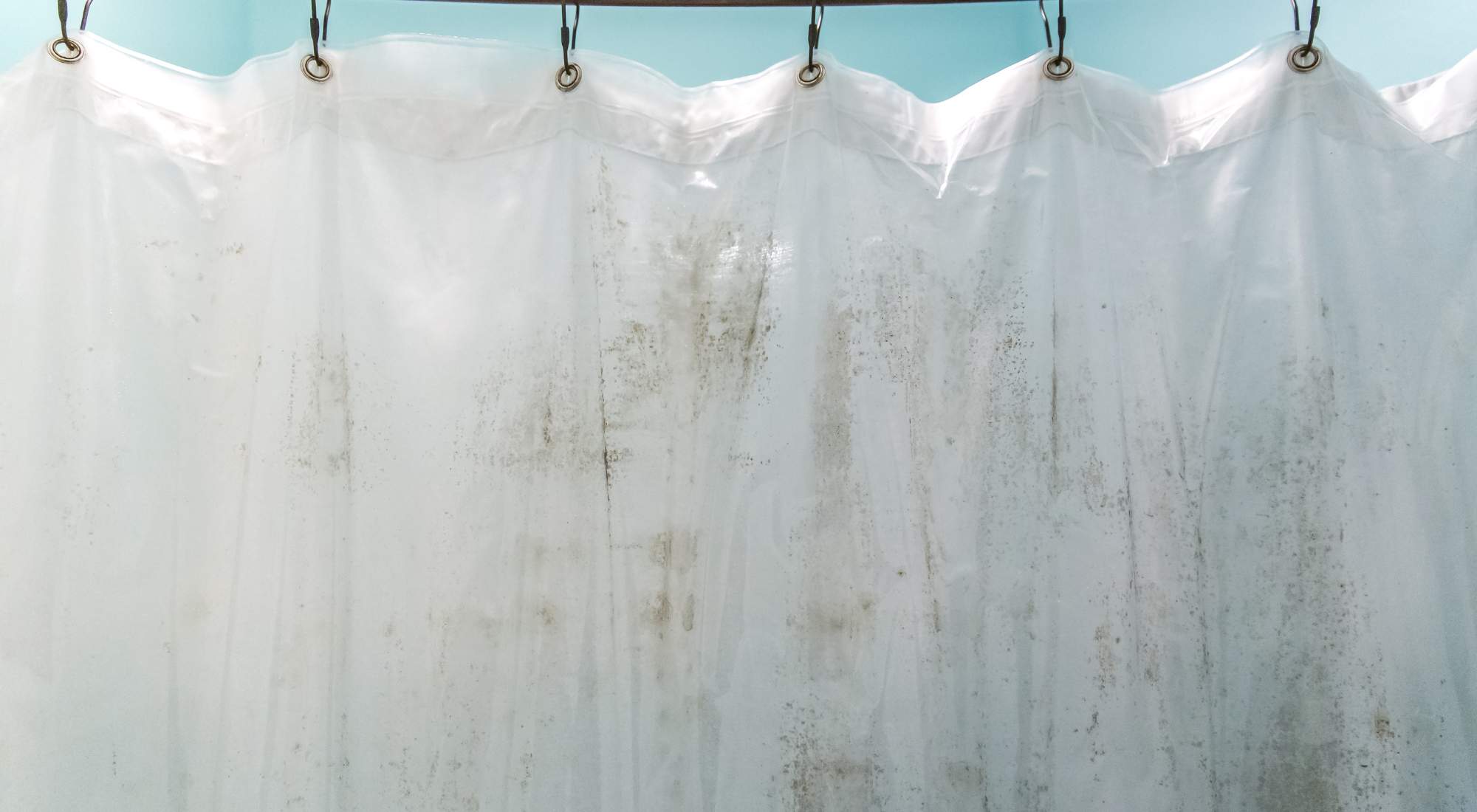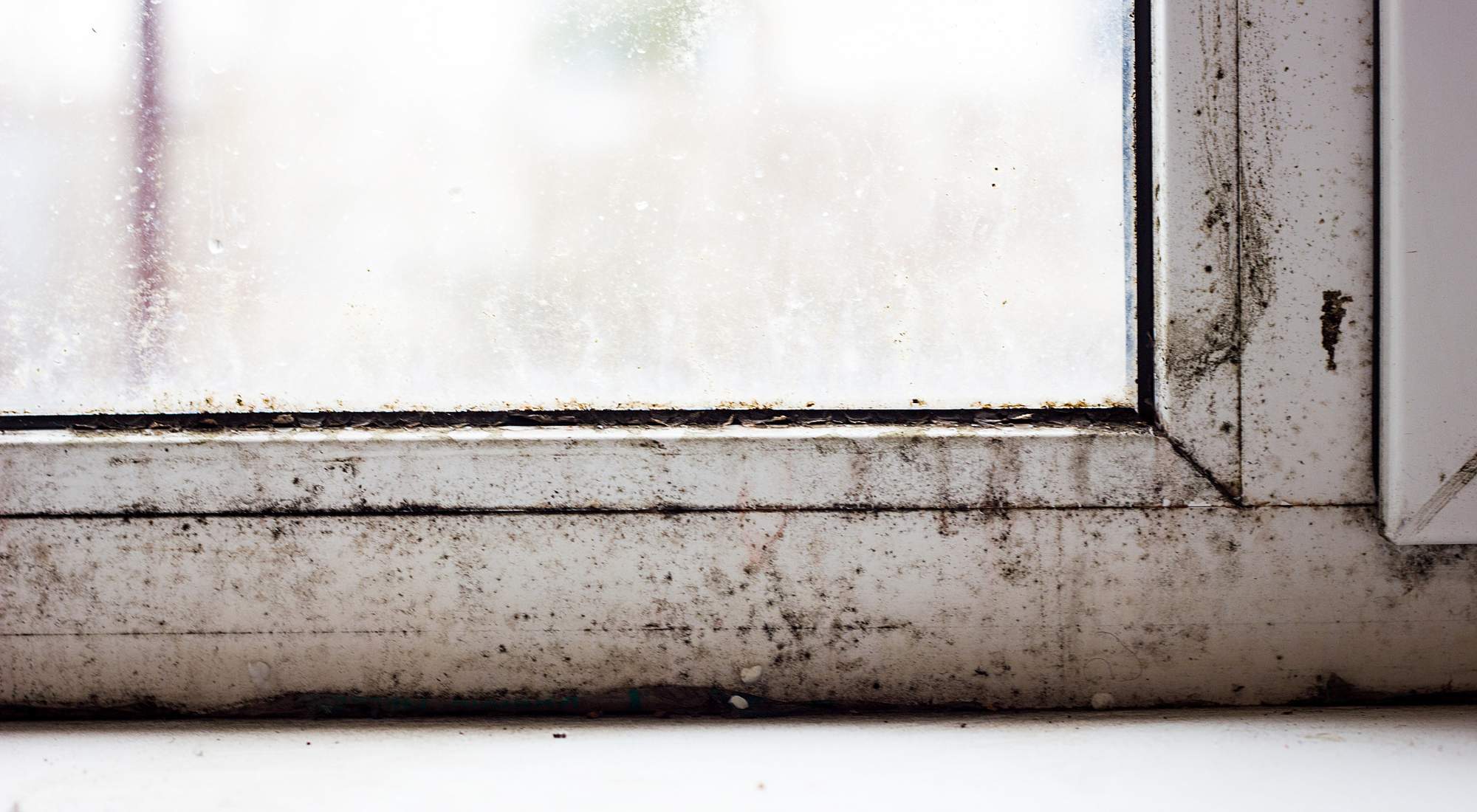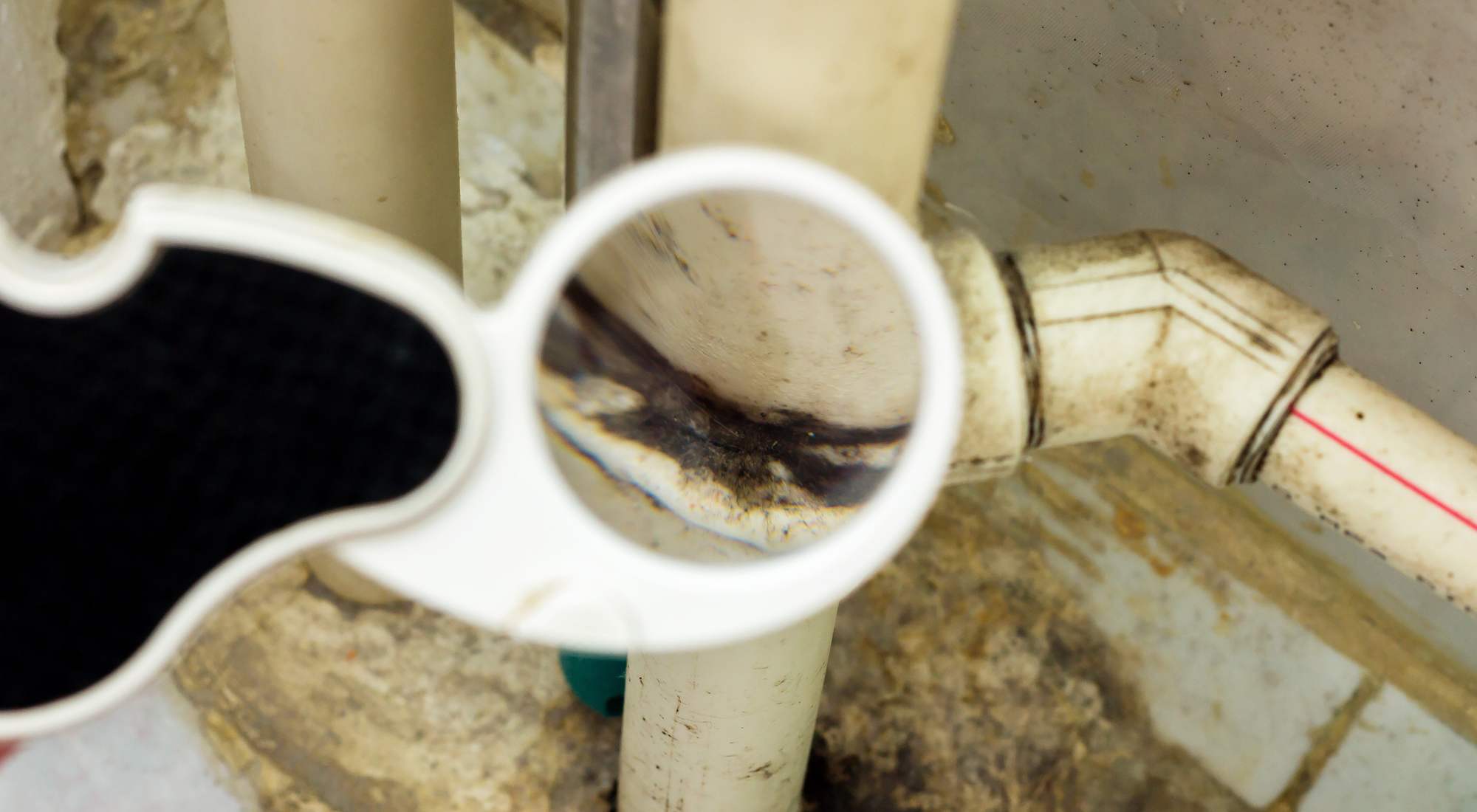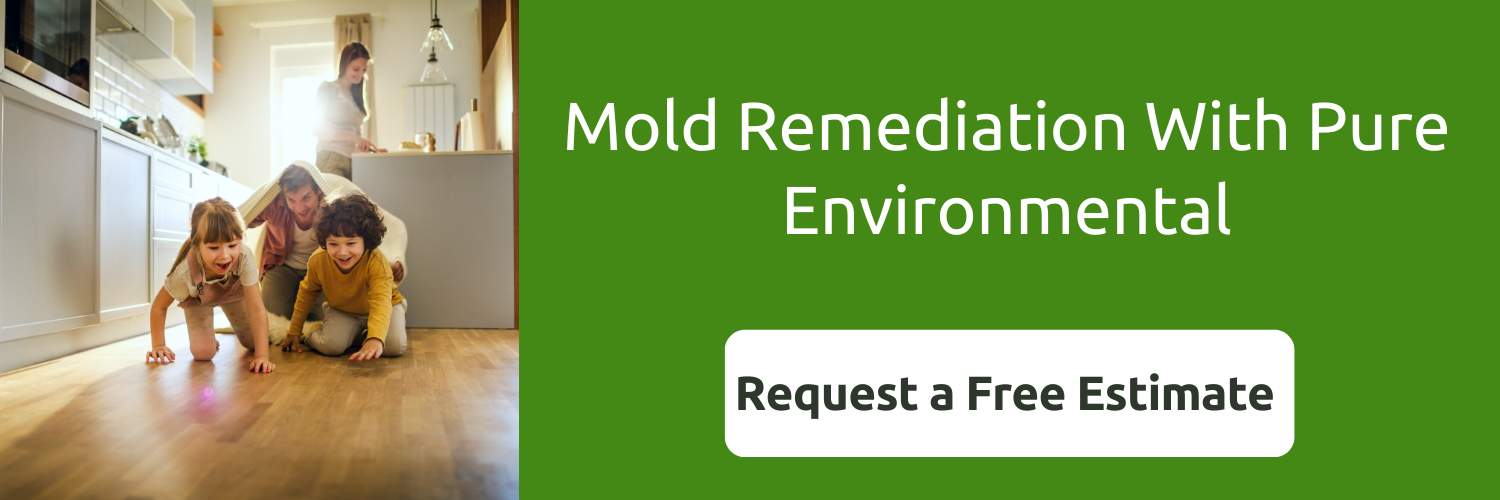Lawn furniture, food storage containers, even your favorite water bottle. These days, so many of the things we use are made of plastic.
And while plastic is great for longevity — research shows that it can last anywhere from between 20 and 500 years — you may be wondering how the plastic items you use every day hold up against mold.
Can mold grow on plastic?
The answer isn’t cut and dried.
Keep reading to learn more about mold on plastic, including ways to prevent it and how to remove existing mold on plastic.

Table of Contents
- Can Mold Grow On Plastic?
- What Does Mold Require To Grow On Plastic?
- How To Prevent Mold From Accumulating On Your Plastic Surfaces
- Removing Mold That Has Grown On Plastic
- Pure Environmental: When Mold Remediation Calls for the Pros
Can Mold Grow On Plastic?
The Short Answer
No, mold can’t grow directly on plastic.
Mold requires an organic substrate (a food source) to grow. Since plastic and polymers in their pure form aren’t a food source for mold (unlike porous materials like wood), mold doesn’t have the fuel it needs to reproduce on plastic.
The Long Answer
While mold can’t grow on plastic, it can and does grow on dust and other organic particles that may collect on or near plastic.
We often find mold growing on non organic materials, such as fiberglass insulation, and on synthetic materials like rubberized molding or baseboard.
But while mold is present on these surfaces, the mold is often really growing on another part of the material, like the glue that’s attached to the rubberized backboard or the paper backing of the fiberglass insulation.
Additives in Plastics
Generally speaking, mold spores can’t easily break down plastic enough to reproduce.
However, plastic contains several additives that give it the features consumers desire — and also have the components that mold needs to grow, including:
- Cellulose
- Plasticizers
- Lubricants
- Stabilizers; and
- Colorants
These added materials are easily broken down by mold into a food source that makes growth easy.
If you’re dealing with mold inside your home, you can trust the professionals at Pure Environmental.
We also specialize in:
- Odor removal
- Crawl space inspection and repairs
- Air filtration
- Disaster restoration
- And more
What Does Mold Require To Grow On Plastic?
Besides the additives we mentioned above that are already embedded in the plastic itself, mold only needs a few things to thrive and survive in any environment — including on plastic, such as:
- A food source
- Moisture
- The right temperature; and
- Time
Food Source
Plastic is not a food source for mold. However, organic materials that deposit on plastic are.
These may include things like:
- Dust
- Dirt
- Pollen
- Dander
- And more
Moisture
When a professional is looking for mold in your home, the first thing they should check is the moisture content.
Mold must have moisture to grow. Our experts have found that depending on the type of mold, the amount of moisture required for growth ranges from 15 to 20%.
It takes a reasonable amount of moisture for mold to propagate. For example, in the Pacific Northwest, the average moisture content of materials inside a house is around 7 to 10%, possibly reaching as high as 12% if your home is near a body of water.
The Pacific Northwest is a rainforest that we have cleared to make room for our homes. Mold loves rain and forests, making the Pacific Northwest a great breeding ground for mold. The moisture in the region creates the perfect condition for the propagation of mold on plastic.
Acceptable Temperature
Another factor that is required for mold to grow on plastic is the ideal temperature. Mold commonly grows in temperatures ranging from between 77 and 86 degrees Fahrenheit. This will vary greatly depending on the type of mold.
Time
Time is also a factor when it comes to whether or not mold can grow on plastic — and if it can, how quickly growth may occur.
How Quickly Can Mold Grow On Plastic?
The speed at which mold can grow on plastic depends on a few factors, including:
- Moisture level – Some plastics are non-porous, like food containers, while others, like shower curtains, are made of semi-porous plastic. Each type of plastic grows mold at a different rate. Semi-porous surfaces can easily trap moisture and hold it for long periods, allowing mold to grow fairly quickly and easily. Nonporous surfaces, on the other hand, cannot trap moisture, making them considerably more resistant to mold growth. For a nonporous surface to grow mold, it must have a consistent supply of moisture.
- Amount of food source – Mold is unable to grow on plastic unless it has a nutrient source. Since some forms of plastic do not provide natural nutrients, the mold must rely on things like dirt, dust, or old food particles to provide the nutrients it needs for growth. For example, mold might grow inside a plastic food container where a bit of rotting food remains or on the inside of a used plastic water bottle that hasn’t been rinsed clean. The greater the food source, the faster mold can grow.
- Air circulation – Plastic items that are in an area with poor air circulation or high humidity, like a bath mat in a windowless bathroom, are more prone to rapid mold growth.
- Cleanliness – The overall cleanliness of the environment also plays a role in mold growth on plastic. Dust and dirt floating in the air can settle on plastic, providing food for mold spores and resulting in rapid growth.
- Temperature – Mold grows more quickly in warm areas with higher humidity. Items in cooler locations have less of a possibility of becoming moldy.

How To Prevent Mold From Accumulating On Your Plastic Surfaces
The best way to keep mold from growing on plastic is by removing the organic particles that allow it to grow.
This may be done by regularly dusting and cleaning the plastic to prevent the tiny particles from accumulating on the surfaces.
Removing Mold That Has Grown On Plastic
Do you have plastic items where mold has already taken up residence? If so, follow these three steps for removing mold on plastic:
- Remove any debris. The first thing you want to do is get rid of any debris on the plastic. This could be in the form of dust, food, mold, or other visible residues.Use a clean sponge or cloth and antimicrobial soap to wash away visible debris. Depending on the quantity and type of mold, you may want to wear gloves and a mask to keep from inhaling mold spores.
- Use a cleaning solution. Once you’ve used soap to scrub away all the visible mold and particles, it’s time to begin the deep cleaningYou may either use straight, undiluted white vinegar or diluted non-chlorine bleach (1 cup of bleach per 4 liters of water). While bleach is generally good for removing mold stains and odors, if it is not diluted properly, it can discolor darker-colored plastic items.Vinegar, on the other hand, is excellent at removing odors but doesn’t deal with stains quite as effectively as the bleach solution. Vinegar is also safe for mold removal around pets and small children.Once you have prepared your cleaning solution, submerge the plastic for at least 1 hour for vinegar and 15 minutes for bleach.If you’ve chosen to use vinegar but find it is not fully removing the stain, baking soda can be added to the mix. The oxidative reaction of the baking soda and vinegar should “lift” the stain off the plastic, making it easier to scrub away.
- Dry the plastic. Once the mold and stain have been completely removed, be certain to dry the cleaned plastic well, since any remaining moisture may allow the mold to grow back.
When Should You Toss a Plastic Item That Has Been Affected by Mold?
Often, plastic items that have been attacked by mold growth can be cleaned. This includes things like outdoor play equipment, lawn furniture, toys, tools, and other plastic items in and around the house.
But sometimes that is simply not the case and can particularly become a problem when mold has grown on food-related plastic items.
How do you know when it’s time to toss a plastic item that has been affected by mold?
Here are a couple of examples:
- Cutting boards – A cutting board that has numerous, deep knife grooves is the perfect home for mold since it can often be challenging to properly scrub the crevices.
- Food containers – Often, food containers that have come in contact with mold can be salvaged. However, if there are cracks and/or scratches on the surface of the plastic, you may not be able to ensure thorough cleaning, and the item should be thrown away.

Pure Environmental: When Mold Remediation Calls for the Pros
If you’re dealing with a mold problem, the professional team at Pure Environmental is ready to help.
We’ve been eradicating mold in the Pacific Northwest since 2010, and our PurAyr technology:
- Oxidizes and neutralizes air and surface contaminants
- Eliminates odors
- Pinpoints the source of odors; and
- Improves your home’s indoor air quality
Our products are:
- 100% green
- Non-toxic; and
- Environmentally friendly
Contact Pure Environmental for your free mold removal estimate today.
Recent posts
- Advice From the Pros: How To Hire a Contractor for Home Renovations
- After the Fire: What To Expect From Smoke Damage Restoration Services
- Home Insurance During Renovations: What Is Covered and What To Know Before Getting Started
- Mitigation and Restoration: Understanding the Difference Between the Two and Why They’re Both Necessary
- Should You Stay or Should You Go? Know When To Walk Away From a House With Mold
